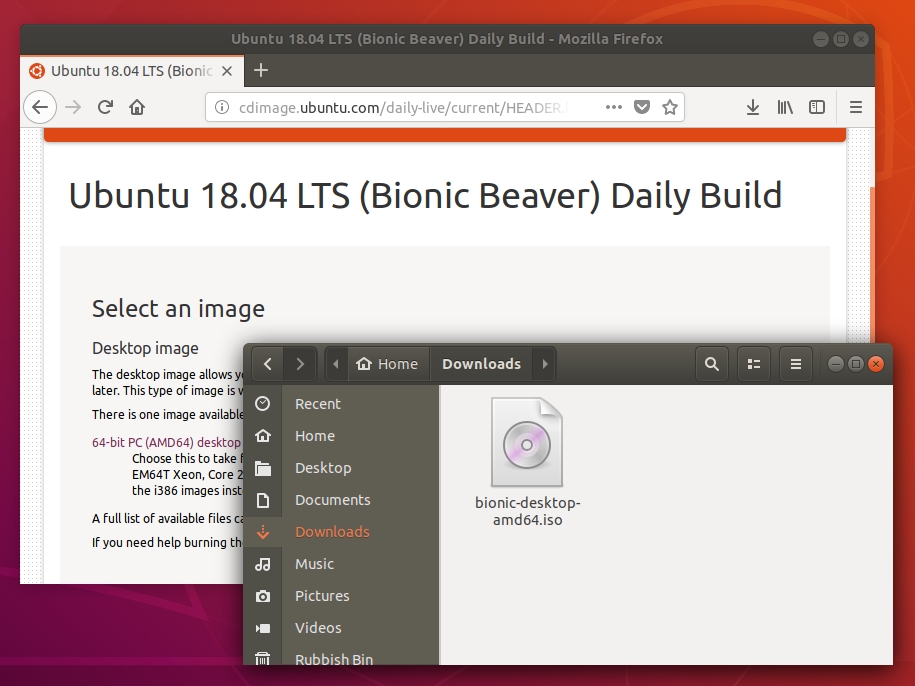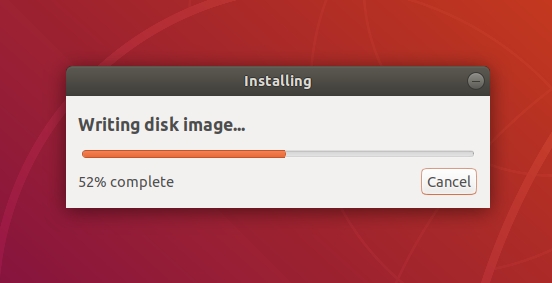USB Installation Media
Creating USB Installation Media
In order to install Ubuntu via a USB stick you will have to create a bootable USB stick containing the Ubuntu OS as shown below. The guide below applies for both Ubuntu 18.04 and Ubuntu 20.04.
Using Windows
We recommend creating a bootable Linux USB stick on a Windows system utilizing Rufus.
Downloading Rufus
You can download Rufus from the official website of Rufus at https://rufus.ie
Go to the official website of Rufus from any web browser and the following will be displayed:





Creating an Ubuntu 18.04 LTS Bootable USB with Rufus
NOTE: Rufus will delete everything from your USB device. If you have any important data, please move it somewhere safe before you go through this process.









Using Ubuntu UI
Please follow the steps shown below:
1. Overview
With a bootable Ubuntu USB stick, you can:
Install or upgrade Ubuntu
Test out the Ubuntu desktop experience without touching your PC configuration
Use tools installed by default on the USB stick to repair or fix a broken configuration
Creating a bootable Ubuntu USB stick is very simple, especially from Ubuntu itself, and we’re going to cover the process in the next few steps.

2. Requirements
You will need:
A 4GB or larger USB stick/flash drive
Ubuntu Desktop 14.04 or later installed
An Ubuntu ISO file.

3. Launch Startup Disk Creator
We’re going to use an application called ‘Startup Disk Creator’ to write the ISO image to your USB stick. This is installed by default on Ubuntu, and can be launched as follows:
Insert your USB stick (select ‘Do nothing’ if prompted by Ubuntu)
On Ubuntu 18.04 and later, use the bottom left icon to open ‘Show Applications’
In older versions of Ubuntu, use the top left icon to open the dash
Use the search field to look for Startup Disk Creator
Select Startup Disk Creator from the results to launch the application

4. ISO and USB selection
When launched, Startup Disk Creator will look for the ISO files in your Downloads folder, as well as any attached USB storage it can write to.
It’s likely that both your Ubuntu ISO and the correct USB device will have been detected and set as ‘Source disc image’ and ‘Disk to use’ in the application window. If not, use the ‘Other’ button to locate your ISO file and select the exact USB device you want to use from the list of devices.
Click Make Startup Disk to start the process.

5. Confirm USB device
Before making any permanent changes, you will be asked to confirm the USB device you’ve chosen is correct. This is important because any data currently stored on this device will be destroyed.
After confirming, the write process will start and a progress bar appears.

6. Installation complete
That’s it! You now have Ubuntu on a USB stick, bootable and ready to go.

Using Ubuntu Console
sudo umount /dev/sdX (where sdX is your USB stick)
sudo dd if=/path/to/ubuntu.iso of=/dev/sdX bs=1M (where ubuntu.iso is the downloaded file and sdX is the USB stick)
Installing Ubuntu
After the USB installation media is created by one of the methods from above please continue to install Ubuntu 18.04 LTS or Ubuntu 20.04 LTS
Last updated